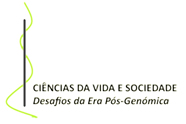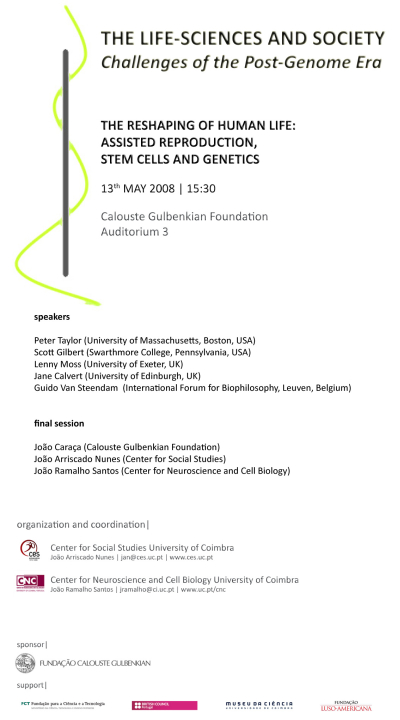Colloquium
Reshaping
Human Life: Medically Assisted Reproduction, Stem Cells and Genetics
13 May 2008,
15h30, Calouste Gulbenkian Foundation, Auditorium 3
Within the Forum "Life Sciences and Society: Challenges of the
Post-Genomic Era"
Free entrance
Summary
The session will set outo debate the manner in which new technologies may affect how a human being is defined and what interventions can legitimately be allowed in terms of genetic banks and regenerative medicine.
One of the consequences of the Human Genome Project, is that the particular genetic make-up of each individual may soon be made easily available, and that a slew of novel genetics-based diagnosis dealing with the predisposition of that individual for different types of possible pathological conditions will most certainly follow. Paradoxically, this will take place at the same time as the limitations of many genetics-only approaches in predicting disease are being made clear. But questions on individuality may take a slightly different slant as one considers the explosion of novel Assisted Reproduction Technologies (ART), and how methods such as gamete and embryo donation and cryopreservation, transfer of material from one gamete to another or surrogacy are changing the, until now, apparently ironclad definitions of what constitutes parenthood, at least at a biological level. A final issue that derives from this discussion is the definition of when an individual actually becomes an individual. Seemingly academic, this is a crucial point for the use of human embryos in research, and thus for the development of novel stem cell-based “regenerative” therapies.
Guest speakers for this session will be:
Peter Taylor (University of Massachusetts, Boston, USA)
Scott Gilbert (Swarthmore College, Pennsylvania, USA)
Lenny Moss (University of Exeter, UK)
Jane Calvert (University of Edinburgh, UK)
Guido Van Steendam (Katholieke Universiteit Leuven, Belgium)
Organized and coordinated by:
João Arriscado Nunes, Centre for Social Studies, jan@ces.uc.pt
João Ramalho Santos, Centre for Neuro-Sciences and Cell Biology, jramalho@ci.uc.pt
University of Coimbra
Sponsor
Calouste Gulbenkian Foundation
Support
British Council Fundação
Luso-american Development Foundation
Foundation for Science and for Technology
Science Museum, University of Coimbra
